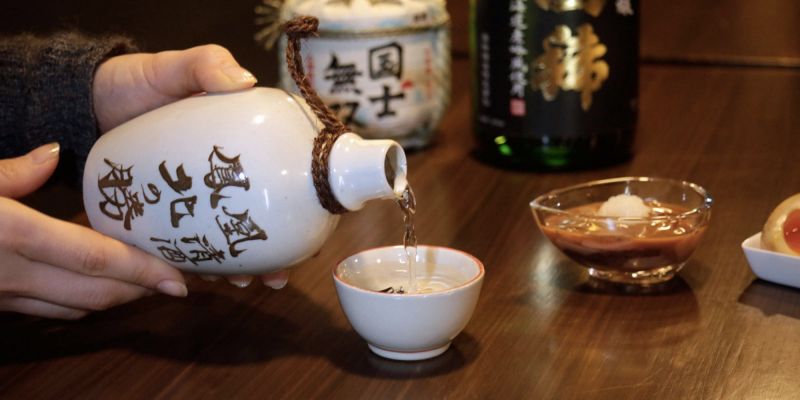Educating Sommeliers Worldwide.
By Beverage Trade Network

When it comes to selecting beverages for a restaurant's menu, sake is often overlooked in favor of more traditional options like wine or beer. However, sake, the Japanese rice wine, offers a unique and versatile addition to any restaurant's offerings. With its rich history, diverse flavors, and growing popularity worldwide, here are a few reasons why every restaurant should consider including sake on the menu.
Introducing sake to a restaurant's beverage lineup allows customers to experience a different aspect of Japanese culture and enhance their dining experience. Sake is deeply rooted in Japanese tradition and has been enjoyed for centuries. By offering sake, a restaurant can provide patrons with a glimpse into Japanese customs and create a more immersive and culturally diverse experience.
The unique brewing process of sake, which involves fermenting rice, water, and koji mold, sets it apart from other alcoholic beverages. This craftsmanship and attention to detail make sake a fascinating choice for customers seeking a new and exciting drinking experience. By showcasing sake on the menu, restaurants can attract adventurous diners and cultivate a reputation for offering a diverse range of beverages.
Sake's versatility makes it an excellent pairing option for a wide range of cuisines, extending beyond Japanese dishes. Its delicate flavors and nuanced profiles complement various flavors and textures, making it a suitable choice for fusion or international menus. Sake's umami-rich characteristics can enhance the taste of seafood, while its clean and refreshing qualities can balance spicier dishes.
Furthermore, like wine, sake offers a range of styles and grades that can be paired with different foods. From crisp and light styles like ginjo or daiginjo for delicate dishes to richer and fuller-bodied sakes like junmai or honjozo for heartier fare, there is sake to complement every culinary creation. Including sake on the menu not only expands customers' beverage choices but also opens up new possibilities for pairing with diverse dishes.
Sake's popularity has been steadily increasing worldwide, with a growing number of people appreciating its unique flavors and cultural significance. Restaurants that include sake on their menu can cater to a wider audience and tap into this expanding market. Offering a selection of sake demonstrates a commitment to providing a diverse and inclusive dining experience that appeals to both sake connoisseurs and those looking to explore new flavors.
Moreover, the rising interest in sake is fueled by the increasing availability of different styles and grades outside of Japan. Craft sake breweries are emerging in various countries, resulting in a broader range of high-quality sakes becoming accessible to restaurants and consumers. By incorporating sake into their offerings, restaurants can be at the forefront of this trend, attracting customers who are eager to discover new and exciting beverages.
Sake should be among every restaurant's offerings due to its cultural diversity, versatility in pairing with various cuisines, and growing popularity. By embracing sake, restaurants can offer a unique and immersive dining experience, broaden their customer base, and cater to the evolving tastes of their patrons. Whether it's a fusion restaurant seeking innovative pairings or an establishment looking to add cultural depth to its menu, including sake is a wise choice that can elevate the overall dining experience and set a restaurant apart from its competitors.
It's worth mentioning three places where individuals can study for a sake certification. These certifications provide in-depth knowledge about sake production, tasting techniques, and the various styles and grades of sake available. Here are three reputable institutions that offer sake certification programs:
The Sake Education Council, based in the United States, offers a comprehensive sake certification program known as the Certified Sake Professional (CSP). This program is designed to provide a deep understanding of sake, covering topics such as production methods, history, sake service, and food pairing. The CSP certification is highly regarded in the industry and is suitable for individuals interested in pursuing a career as a sake sommelier or enhancing their knowledge as a beverage professional.
WSET, a globally recognized organization for wine and spirits education, offers a dedicated sake certification program called the WSET Level 3 Award in Sake. This program is designed for individuals who wish to develop a strong understanding of sake production, styles, and the factors influencing its quality. The WSET sake certification is ideal for professionals in the hospitality industry, including sommeliers, buyers, and distributors, as well as enthusiasts who want to deepen their knowledge of this traditional Japanese beverage.
The Sake Service Institute, based in Japan, is a prominent organization focused on promoting sake appreciation and education worldwide. SSI offers the Certified Sake Professional (CSP) program, which covers a wide range of sake-related topics, including production techniques, regional variations, and sake tasting. This certification is highly regarded in Japan and is suitable for professionals working in the hospitality industry, particularly those with a focus on Japanese cuisine.
These three institutions provide comprehensive sake certification programs that cater to individuals with varying levels of expertise and interests. Whether someone is seeking a career in the beverage industry or simply wants to expand their knowledge and appreciation of sake, these programs offer valuable insights and recognition. As the popularity of sake continues to grow globally, obtaining a sake certification can be a valuable asset for individuals looking to excel in the industry and provide exceptional sake experiences to customers.